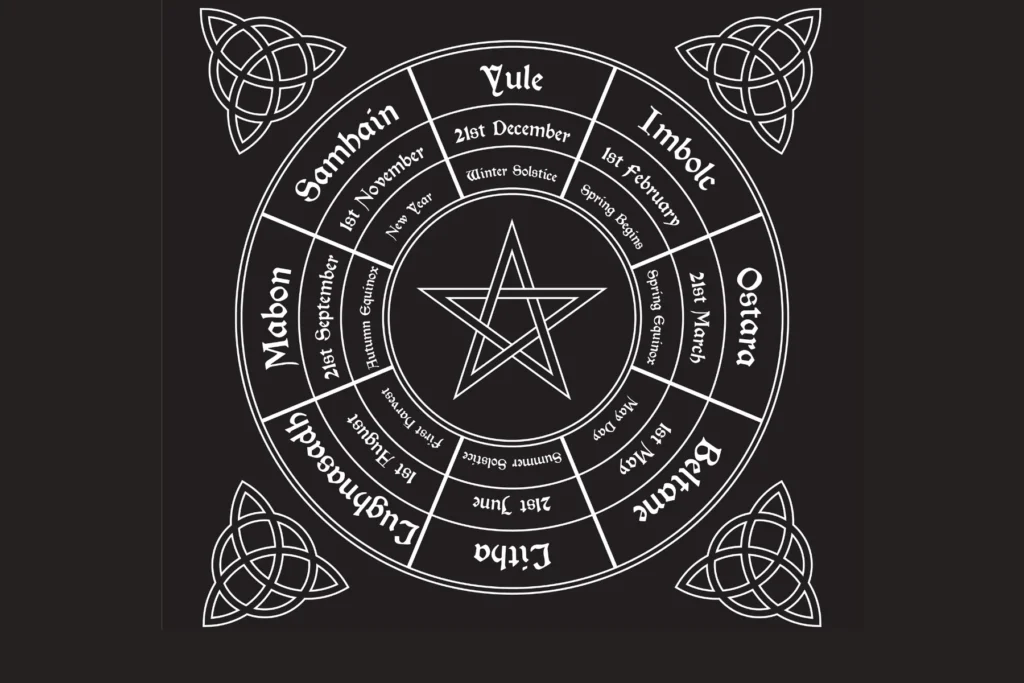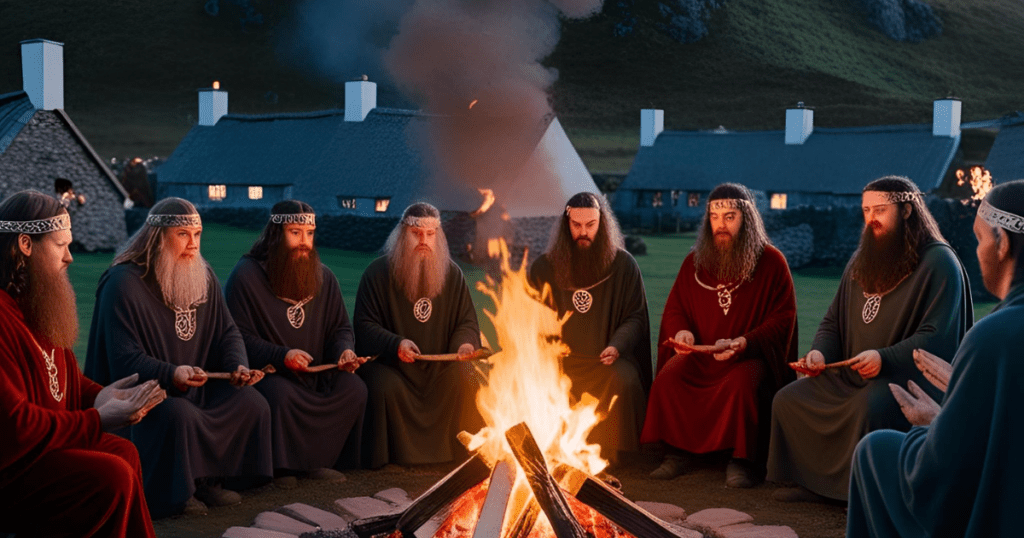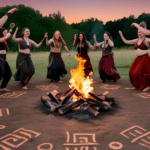Paganism is deeply rooted in the cycles of life—birth, growth, death, and rebirth. These rhythms are mirrored in the changing of the seasons, the phases of the moon, and the natural life cycles of plants and animals.
Honoring these cycles through rituals and festivals helps pagans align themselves with the natural flow of life, finding balance, renewal, and connection with the divine.
The Sacred Cycle of the Seasons

In paganism, the cycle of the seasons is reflected in the Wheel of the Year—eight festivals that mark the solar and agricultural changes throughout the year:
- Samhain – The end of the harvest season, honoring death and the thinning veil between worlds.
- Yule – Celebrating the rebirth of the sun at the winter solstice.
- Imbolc – Marking the beginning of spring and the awakening of life.
- Ostara – Celebrating fertility and growth during the spring equinox.
- Beltane – A fire festival celebrating love, passion, and fertility.
- Litha – Honoring the sun at its peak during the summer solstice.
- Lammas – Giving thanks for the first harvest.
- Mabon – A festival of balance and gratitude during the autumn equinox.
Each festival represents a different phase in the life-death-rebirth cycle, reminding pagans that change is natural and necessary.
Harvesting Energy and Letting Go
Harvest festivals like Lammas and Mabon emphasize both gratitude and release:
- Harvesting Energy – Pagans gather the fruits of their labor, whether it’s a literal harvest or the results of personal and spiritual work.
- Letting Go – Just as trees shed their leaves in autumn, this is a time to release what no longer serves you.
As author Starhawk writes, “To let go is to trust the cycles of life and know that what dies will be reborn.” Letting go creates space for new growth and transformation.
Renewal Through Sacred Rituals
Rituals for renewal are key to honoring life’s cycles. Some common practices include:
- Bonfires and Candle Lighting – Fire symbolizes transformation and the burning away of the old to make way for the new.
- Cleansing with Water – Ritual baths or sprinkling water around sacred spaces to wash away negative energy.
- Planting Seeds – Both symbolic and literal, planting seeds during festivals like Ostara represents setting intentions for future growth.
By participating in these rituals, pagans connect with the earth’s natural rhythms and find personal healing.
Honoring the Dark and the Light
In pagan tradition, life is seen as a balance of light and dark, growth and decay:
- Darkness – Associated with introspection, rest, and the underworld.
- Light – Symbolizes action, creativity, and outward expression.
Honoring both aspects teaches pagans that life’s challenges and endings are as sacred as its joys and beginnings.
“Without the dark, we cannot see the stars.” – Pagan Proverb
Embracing the full spectrum of life allows for deeper acceptance and inner peace
The cycles of life in paganism teach that endings are not final—they are part of a greater pattern of renewal. By honoring the cycles of the seasons, practicing rituals of release and rebirth, and embracing both light and dark, pagans cultivate a profound connection with nature and the divine.



